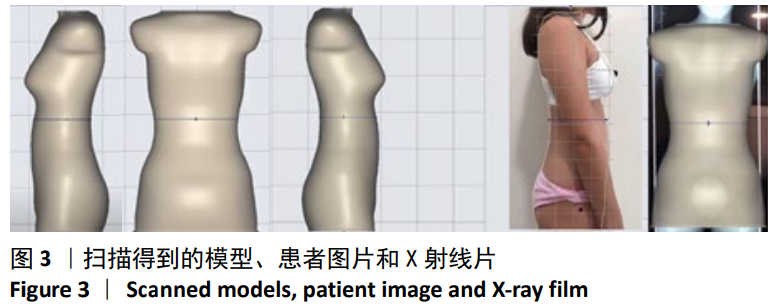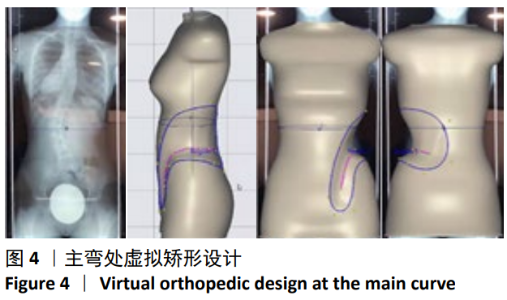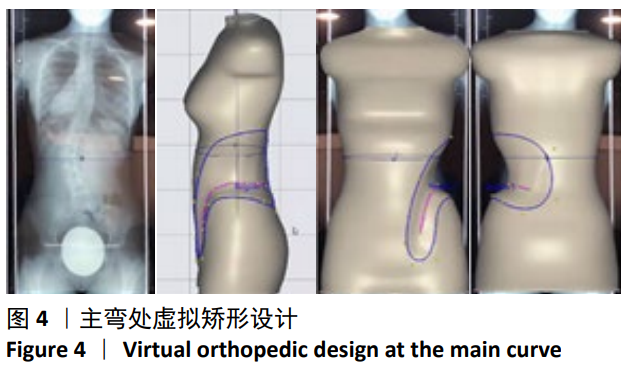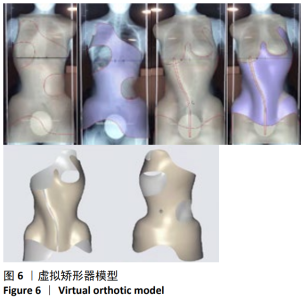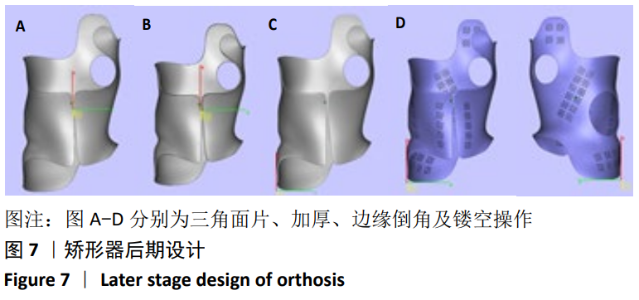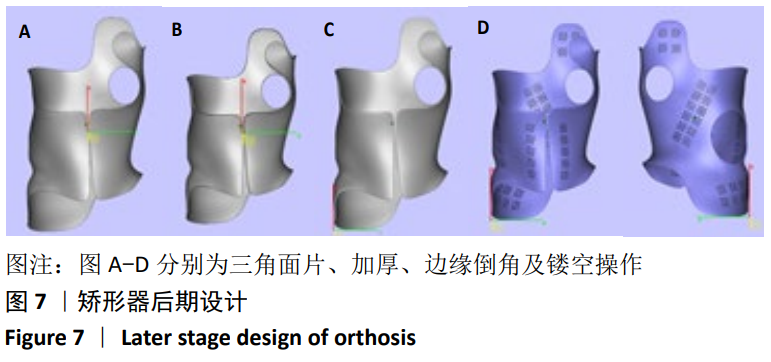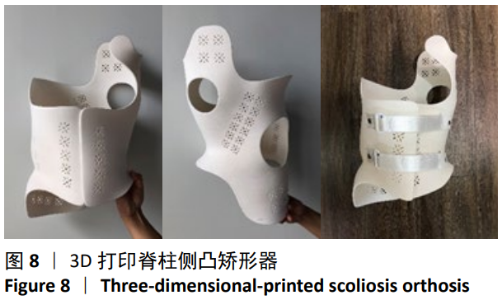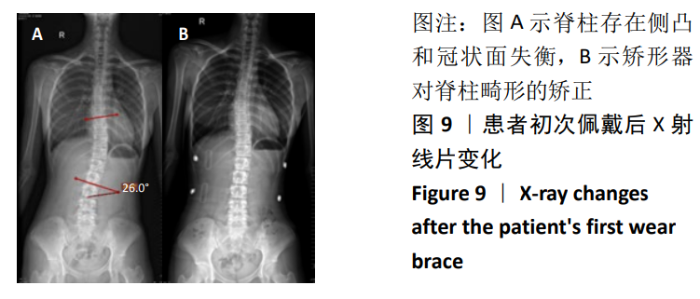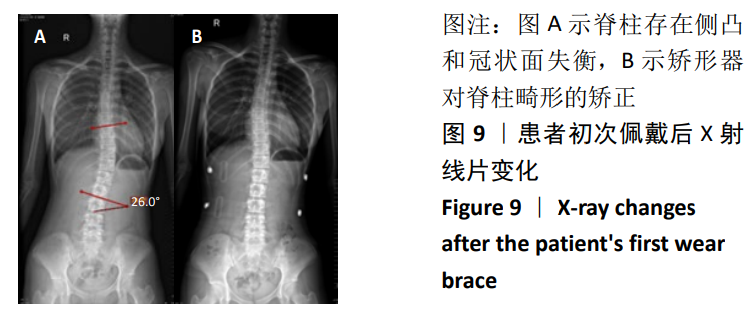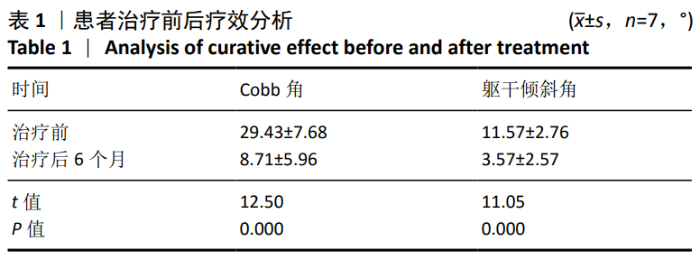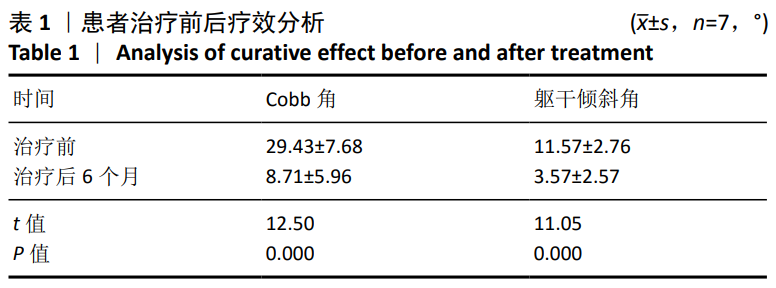[1] NIGRIN S, DONELLA S, AULIS AG, et al. 2016 SOSORT guidelines: orthopedic and rehabilitation treatment of idiopathic scoliosis during growth. Scoliosis Spinal Discord. 2018;13:3.
[2] NIGRIN S, AULIS AG, AULIS L, et al. 2011 SOSORT Guidelines: Orthopedic and Rehabilitation Treatment of Idiopathic Scoliosis During Growth. Scoliosis. 2012;7(1):3.
[3] AULISA A G, GUZZANTI V, FALCIGLIA F, et al. Lyon bracing in adolescent females with thoracic idiopathic scoliosis: a prospective study based on SRS and SOSORT criteria. BMC Musculoskelet Disord. 2015;16: 316.
[4] XU GJ, FU X, TIAN P, et al. Comparison of single and dual growing rods in the treatment of early onset scoliosis: a metanalysis. J Orthoepy Surg Res. 2016;11(1):80.
[5] DUNN J, HENRIKSEN NB, MORRISON CC, et al. Screening for adolescent idiopathic scoliosis: evidence report and systematic review for the us preventive services task force. JAMA. 2018;319(2):173-187.
[6] RAHIMI S, KIAGHADI A, FALLAHIAN N. Effective factors on brace compliance in idiopathic scoliosis: a literature review [published online ahead of print, 2019 Jun 28]. Disabil Rehabil Assist Technol. 2019:1-7.
[7] AULIS AG, GIORDANO M, FELICIA F, et al. Correlation between compliance and brace treatment in juvenile and adolescent idiopathic scoliosis: SOSORT 2014 award winner. Scoliosis. 2014;9:6.
[8] BUNGE EM, DE BEKKER-GROB EW, VAN BEEN FC, et al. Patients’ preferences for scoliosis brace treatment: a discrete choice experiment. Spine. 2010; 35(1): 57-63.
[9] 王金武,王黎明,左建强,等.3D打印矫形器设计、制造、使用标准与全流程监管的专家共识[J]. 中华创伤骨科杂志,2018,20(1):5-9.
[10] 徐纯鑫,赵菁,元相喜,等.Rodin4D技术与传统石膏技术制作青少年特发性脊柱侧凸矫形器的临床疗效观察[J].中国康复医学杂志, 2019,34(8):941-944.
[11] 刘巍,吴会东,刘垚,等.矫形器和运动训练对青少年特发性脊柱侧凸的效果比较[J]. 中国康复理论与实践, 2019, 25(8): 869-874.
[12] PATIOS P, GRAVES TB, ASPIRES A, et al. A review of the trunk surface metrics used as Scoliosis and other deformities evaluation indices. Scoliosis. 2010;5:12.
[13] DE MAUREY JC, LECANTO C, BARREL F. “Brace Technology “Thematic Series - The Lyon approach to the conservative treatment of scoliosis. Scoliosis. 2011;(6):4.
[14] 陈楠,杜青,陈佩杰,等.利用Colanguage测量脊柱侧凸时躯干倾斜角度的可靠性分析[J].中国康复医学杂志,2015,30(3):247-250.
[15] KARIMI MT, RABCZUK T. Evaluation of the efficiency of Boston brace on scoliotic curve control: A review of literature. J Spinal Cord Med. 2019:1-8.
[16] WEINSTEIN SL, DOLAN LA, WRIGHT JG, et al. Effects of bracing in adolescents with idiopathic scoliosis. N Engle J Med. 2013;369(16): 1512-1521.
[17] HARARI RE, ZAHOOR-REGEV D, FLAMAN Y, et al. Brace treatment in adolescent idiopathic scoliosis: risk factors for failure-a literature review. Spine J. 2019;19(12):1917-1925.
[18] BRUX JI, LANGE JE, GUNDERSON RB, et al. Good brace compliance reduced curve progression and surgical rates in patients with idiopathic scoliosis. Eur Spine J. 2012;21(10):1957-1963.
[19] WONG MS. Computer-aided design and computer-aided manufacture (CAD/CAM) system for construction of spinal orthosis for patients with adolescent idiopathic scoliosis. Physiotherapy Theory Pact. 2011;27(1): 74-79.
[20] COBETTE N, AUBIN CE, CLIN J, et al. Braces optimized with computer-assisted design and simulations are lighter, more comfortable, and more efficient than Plaster-Cast Braces for the treatment of adolescent idiopathic scoliosis. Spine Deform. 2014;2(4):276-284.
[21] WEISS HR, TONALITIES N, NAN X, et al. Workflow of CAD/CAM scoliosis brace adjustment in preparation using 3D printing. Open Med Inform J. 2017;11(1): 44-51.
[22] WEISS HR, TOURNAVITIS N, SEIBEL S. A prospective AIS cohort of 40° and more treated with the Gensingen brace (GBW) – Preliminary results. Proceedings of the 10th Hellenic Spine Congress. Thessaloniki. 2016, October 26th - 29th.
[23] WEISS HR, TONALITIES N, SEIBEL S. Preliminary results of a prospective AIS cohort treated with the Gandingan brace (GBW). Proceedings of the 10th Hellenic Spine Congress. Thessaloniki. 2016.
[24] ROUX S, KOHLER R, GRAIN C, et al. Tridimensional trunk surface acquisition for brace manufacturing in idiopathic scoliosis. Eur Spine J. 2014;23(4): 419-423.
[25] LUNSFORD C, GRINDLE G, SALATIM B, et al. Innovations With 3-Dimensional Printing in Physical Medicine and Rehabilitation: A Review of the Literature. PM R. 2016;8(12):1201-1212.
[26] BARONIAL G, VILONIA P, SIGNORI A. Concept and design of a 3d printed support to assist hand scanning for the realization of customized orthosis. Appl Bionics Biotech. 2017;2017:8171520.
[27] Santos S, Soares B, Elite M, et al. Design and development of a customized knee positioning orthosis using low cost 3D printers. Vert Phys Proton. 2017:1-11.
[28] KYODAI B, SAEED H, JALILI M, et al. Comparison of plantar pressure distribution in CAD-CAM and prefabricated foot orthoses in patients with flexible flatfeet. Foot. 2017;33:76-80.
[29] GEOFFROY M, GARDEN J, GOODNOUGH J, et al. Cranial remodeling orthosis for infantile plagiocephaly created through a 3d scan, topological optimization, and 3d printing process. J Prosthetic Orthotic. 2018;1(1):201-209.
[30] ROYE BD, SIMHON ME, MATSUMOTO H, et al. Establishing consensus on the best practice guidelines for the use of bracing in adolescent idiopathic scoliosis. Spine Deform. 2020;10.1007/s43390-020-00060-1.
[31] 黄楚红,黄文华,黄国志.3D打印技术在康复医学中的应用与研究进展[J].中国康复医学杂志,2020,35(1):95-99.
|



